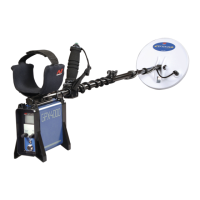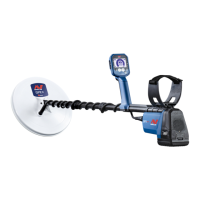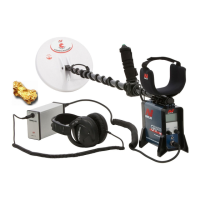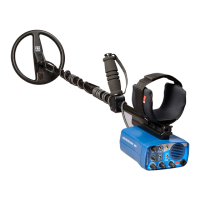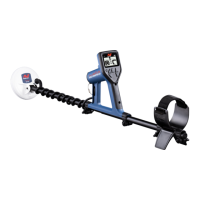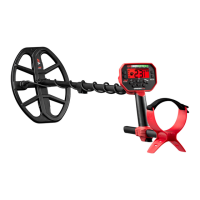12
CONTENTS
1. Turn on
` Connect the Double-D coil.
` Turn the detector on, and then adjust the detector settings to the following settings:
Sensitivity: Level 6 (manual) | Ground Type: Normal | Coil Type: Mono
These settings provide the best basis for the advanced Mono and Double-D coil detecting procedures.
2. Select a Double-D mode
` Set the Double-D mode (page 11) to based on the noise source.
If noise is present when the coil is held still over the ground, EMI is likely to be the source of the noise.
EMI Cancel: use if the noise is due to atmospheric interference that could not be resolved using Noise Cancel
or by reducing the sensitivity level.
Salt Cancel: Use if the noise is due to interference from salty (conductive) soils that could not be resolved by
using the Noise Cancel function, by reducing the sensitivity level, or by changing the Ground Type to Difficult.
Salt Cancel should only be used if noise resulting from salt is an annoyance to the user.
` Swing the coil over an area of metal-free ground near to where you will be detecting. Swing the coil as close and
parallel to the ground as possible. Listen carefully to the signals. There should be audible tone variation, but not so
much that signals sound erratic or noisy.
If, at this point, there is noise present, try the following steps one-by-one, in order.
All steps may not be required.
Reduce Sensitivity
Reduce the Sensitivity level (page 8).
Proceed to “3. Begin Detecting” if the detector
becomes quiet after reducing the sensitivity level.
Power Off
Persistent noisy conditions are rare, however in
the event that all steps to manage noise have been
followed, detecting at the chosen location will
not be possible.
3. Begin Detecting
` Once the noise levels are at an acceptable level, begin detecting.
Double-D coil advanced procedure
The GPX 6000 Double-D coil excels in locations that have very high levels of
interference. They are less noisy than mono coils, but are also less sensitive.
Generally, the Double-D coil should only be used once the Mono coil advanced procedure (page 14) has been completed
without success. It can also be used in areas that have known high levels of EMI or very salty (conductive) soils.
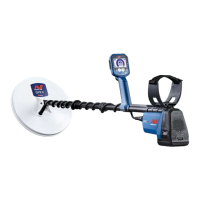
